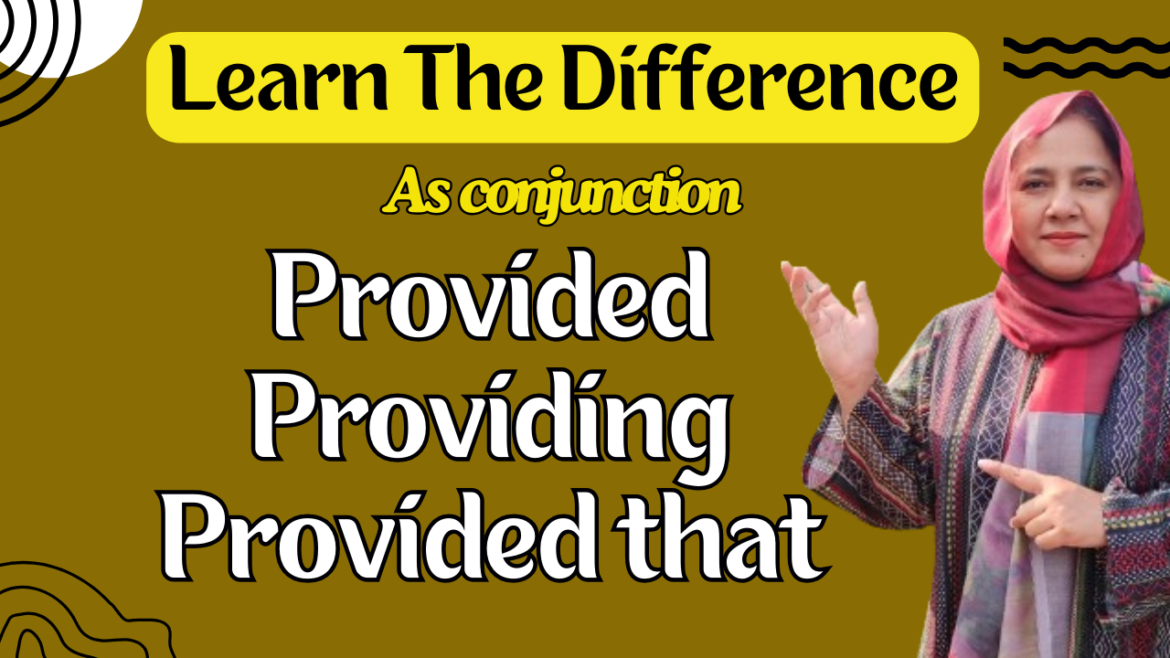In English grammar, conjunctions play a crucial role in connecting clauses and providing clarity. Among the conjunctions, “provided,” “providing,” and “provided that” often cause confusion due to their similar meanings and usage. In this blog post, we’ll delve into the nuances of these terms, offering clear explanations and examples to help you master their use.
Understanding Conjunctions
Conjunctions are words that link other words, phrases, or clauses. They are essential for creating complex sentences and ensuring coherence in writing. “Provided,” “providing,” and “provided that” are conjunctions that introduce conditions, making them vital for conditional statements.
The Use of "Provided" as a Conjunction
“Provided” is a moderately formal conjunction used to introduce a condition. It implies that one action or situation depends on another.
Examples:
- You can borrow my car, provided you return it by tomorrow.
- Employees can work remotely, provided they meet their deadlines.
- The contract will be valid, provided both parties sign it.
- You may attend the seminar, provided you register in advance.
- We’ll go for a picnic, provided the weather stays sunny.
In each example, “provided” introduces a condition that must be met for the main clause to occur.
The Use of "Providing" as a Conjunction
“Providing” is a less formal conjunction compared to “provided.” It serves the same function, introducing conditions but is often used in more conversational contexts.
Examples:
- I’ll lend you my book, providing you return it next week.
- We can have the meeting outside, providing it doesn’t rain.
- She will help with the project, providing she has the time.
- They’ll join us for dinner, providing they finish work early.
- You can stay overnight, providing you don’t mind the sofa bed.
“Providing” is interchangeable with “provided” but is preferred in casual conversations.
The Use of "Provided That" as a Conjunction
“Provided that” is the most formal of the three conjunctions. It explicitly sets a condition and is often used in written and official contexts.
Examples:
- You can start the job, provided that you sign the contract.
- The project will continue, provided that we receive funding.
- She can take leave, provided that she informs HR.
- The offer stands, provided that you respond by Monday.
- We will proceed with the plan, provided that everyone agrees.
“Provided that” adds a layer of formality and clarity, making it ideal for professional and academic writing.
Key Differences and Usage Tips
- Formality: “Provided that” is the most formal, “provided” is moderately formal, and “providing” is least formal.
- Context: Use “provided that” for formal writing, “provided” for general conditions, and “providing” for informal, conversational contexts.
- Interchangeability: While all three can often be used interchangeably, choosing the right one depends on the formality of your writing.
Conclusion
Mastering the use of “provided,” “providing,” and “provided that” as conjunctions can significantly enhance your writing clarity and effectiveness. By understanding their nuances and appropriate contexts, you can ensure that your conditional statements are both grammatically correct and stylistically suitable.
Remember, the key to effective writing is not just knowing the rules but also applying them with precision. Practice using these conjunctions in different sentences to become more comfortable with their usage. With time and practice, you’ll be able to effortlessly incorporate “provided,” “providing,” and “provided that” into your writing, making your conditional statements clear and impactful.


